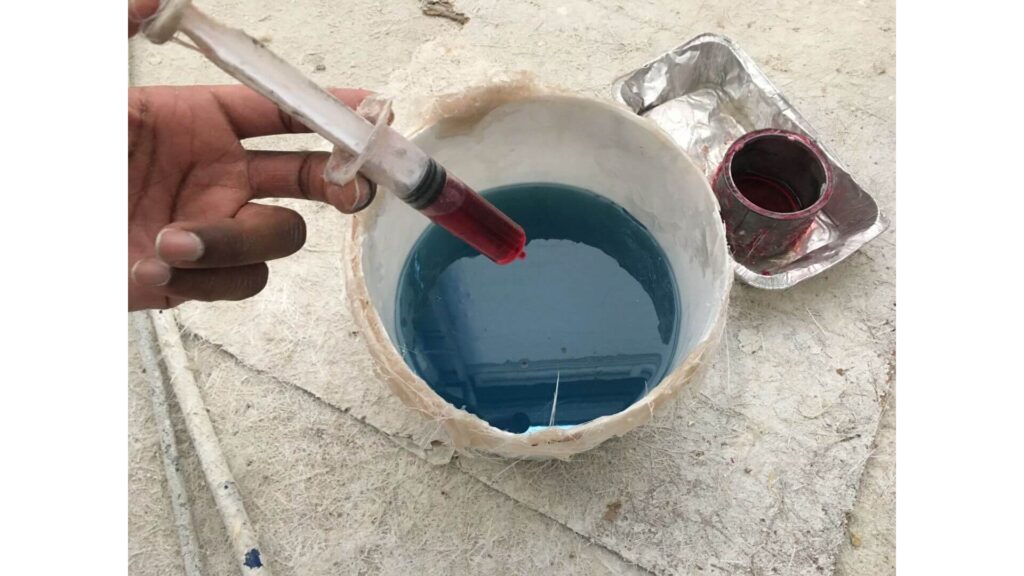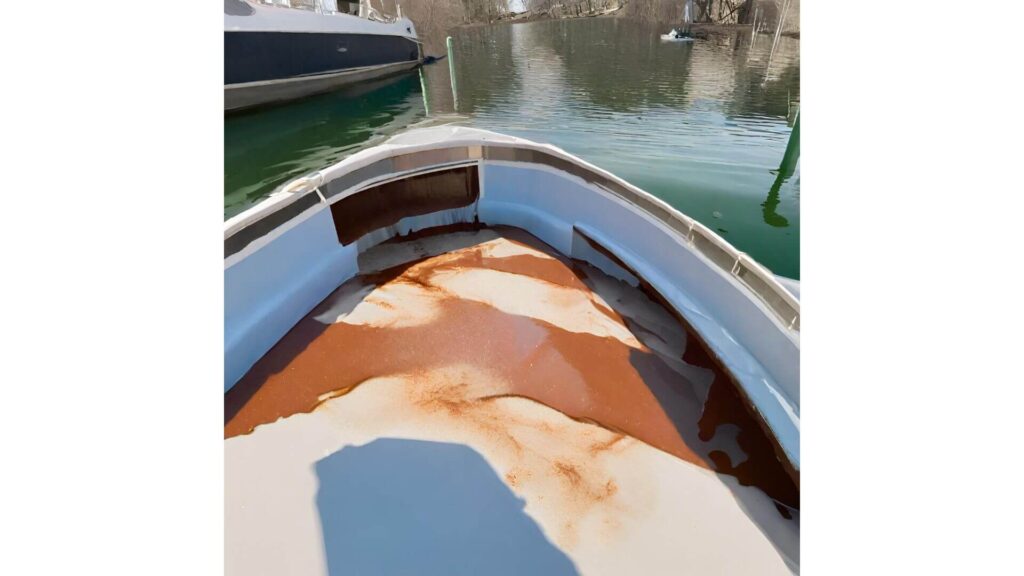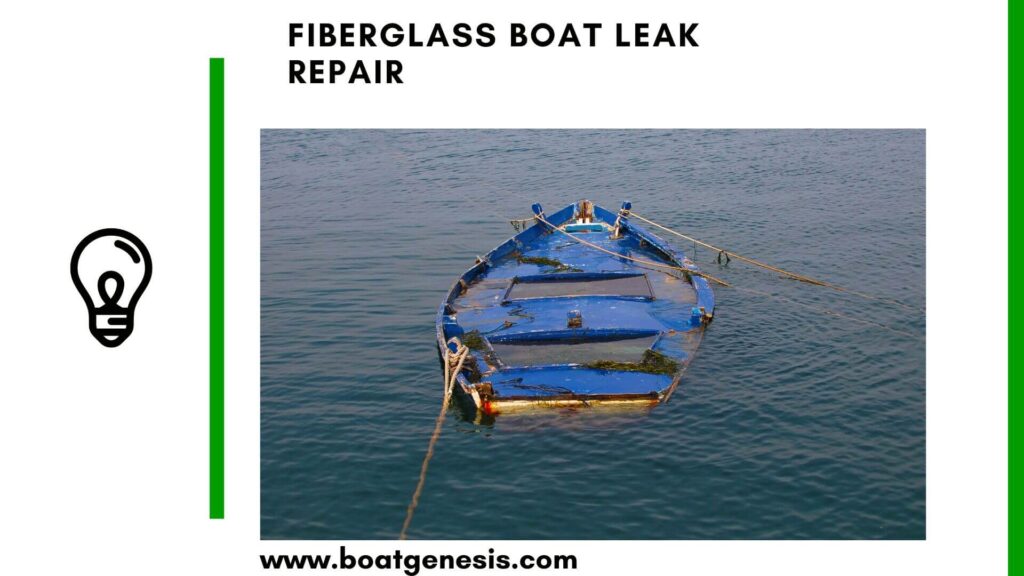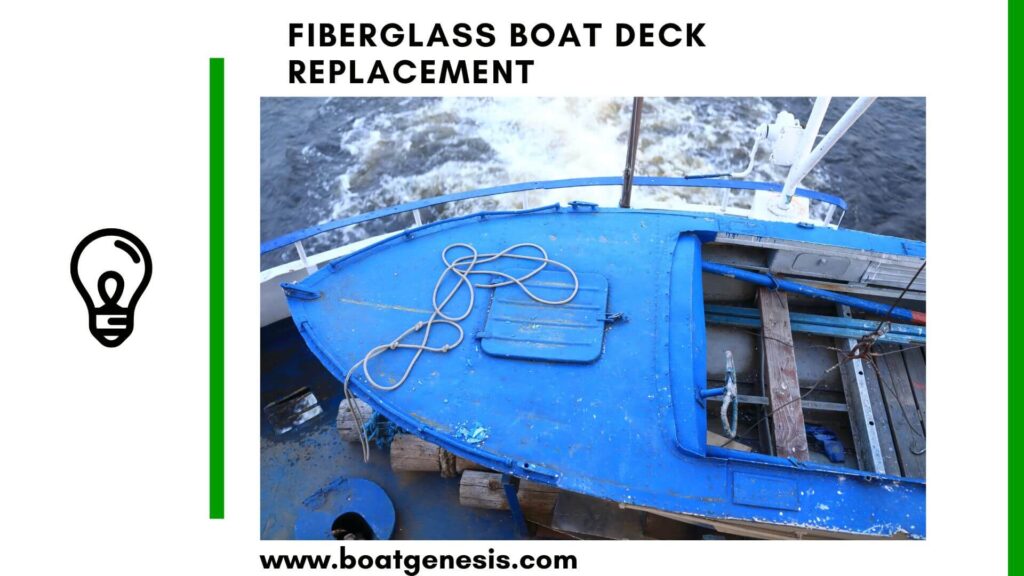If you’ve discovered a leak in your fiberglass boat, it’s important to repair it promptly to avoid further damage.
This article provides a step-by-step guide for a perfect fiberglass boat leak repair using materials easily obtained at your local marine store or online.
Fiberglass Boat Leak Repair
Here are my recommended steps to fix leaks on your fiberglass boat.
1. Identify the Exact Location of the Leak
Start by thoroughly cleaning, drying and degreasing the area around the leak to remove any grime or sealants.
If the leak is large, you may need to drain water from the bilge and use a hose to pinpoint the exact spot where water is entering. Mark the area once located.
==>> You should also consider reading my guide on how to check a fiberglass boat for leaks here. This is an important step before the repair process.
2. Prepare the Fiberglass Surface
Sand the area surrounding the leak with 80-100 grit sandpaper to rough up the gelcoat surface. This helps the repair resin adhere properly. Wipe clean and dry the sanded area.
==>> You can read more about sanding a fiberglass boat here.
3. Mix the Repair Resin

Choose a high-quality polyester repair resin specifically made for marine use.
Slowly mix in the hardener as directed on the product instructions, generally about 2-4% by volume. Only mix as much as you can use in 20-30 minutes.
4. Fill and Seal the Leak
Use a plastic spreader to apply about 1/8 inch of thickened resin directly over the leak. Apply fibers or mesh cloth into the resin if it is a large crack or hole.
Allow to cure per resin instructions, applying more layers if needed.
5. Smooth and Finish
Once fully cured, start with 80 grit sandpaper to smooth out the repair area then work up to 220-400 grit for a polished finish.
This will prep the surface for paint or gelcoat application. Clean and degrease again.
6. Refinish and Seal
Use layers of an epoxy primer followed by marine-grade polyurethane topside paint in the color matched to your boat.
For small repairs below the waterline, apply several coats of bottom paint per manufacturer specifications to protect against corrosion.
7. Conduct a Final Leak Check
After thoroughly resealing and refinishing the repaired area, conduct another leak test by filling the boat with water and marking the water line. Confirm no additional water enters after several hours.

Final Thoughts
Catching and repairing fiberglass boat leaks quickly saves your hull from serious issues down the road. Let the smooth sailing continue!
Let me know in the comment section if you need any clarification or have questions about other leak repair methods.

Founder of BoatGenesis, Warren has hands-on experience in fiberglass boat repairs, marine equipment testing, and powerboat building. Learn more about Warren.



